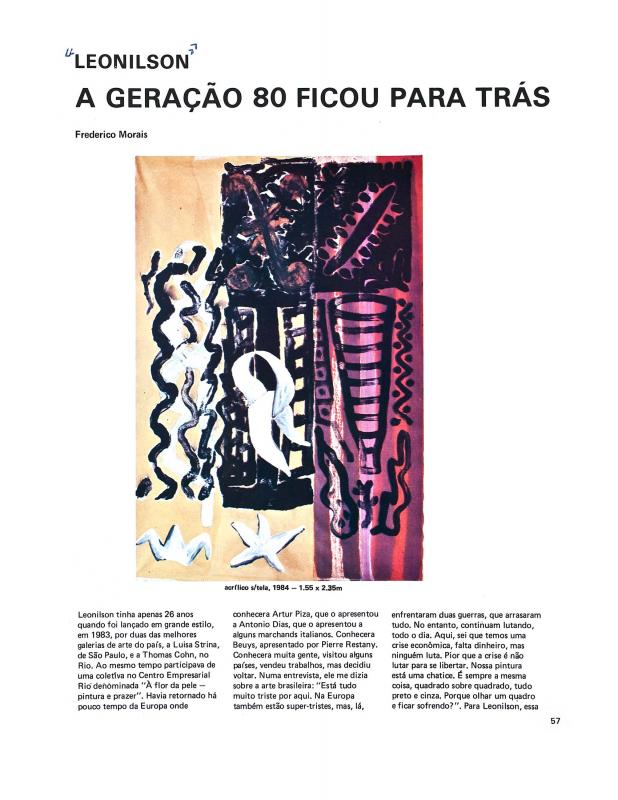French-Brazilian journalist and art critic Sheila Leirner formed part of the Conselho de Arte e Cultura da Bienal from 1982 to 1983. She was the curator of the XVIII São Paulo Biennial held in 1985 and of the XIX Biennial held in 1987. After studying the sociology of art in France, she worked as an art critic for the newspaper O Estado de S. Paulo in 1975. A compilation of her essays was published under the title Arte e seu tempo (São Paulo: Editôra Perspectiva, 1991). Since 1991, she has lived in Paris where her work involves art administration. She was the Latin American representative to the Galerie nationale du Jeu de Paume from 1993 to 1999 and a member of the French chapter of the International Association of Art Critics (AICA). She has contributed to countless magazines and supplements in France and Brazil, among them Beaux-Arts Magazine, Europe Magazine Littéraire, Revista da USP, and Cadernos de Literatura Brasileira. She sits on the UNESCO-ASCHBERG Bursaries for Artists.
Despite the range of artists included in the show 3x4 Grandes formatos, its discourse established the parameters for Como vai você, Geração 80!, an exhibition that would become a watershed for artists of that generation in Rio de Janeiro and for what is called “the return to painting.”
Like the European “retour à l’ordre” which attempted to put an end to the historical avant-gardes via painting, the conservative—if not outright reactionary—“return to painting” that took place in art in the eighties sought to quench the flames of Conceptualism, video art, and Mail art prevalent in prior decades. A number of essays have been written on the Brazilian version of this phenomenon.
In his essay entitled “Gosto deste cheiro de pintura” [doc. no. 1110992] on the show 3x4 Grandes formatos, Frederico Morais argues that, despite prejudice against the painting medium, the return to painting in the eighties was in fact “anti-authoritarian” insofar as it openly opposed the hermetic intellectualism of prior artistic tendencies. In “Leonilson: a Geração 80 ficou para trás” [doc. no. 1110961], Morais discusses the specific case of artist José Leonilson Bezerra Dias whose figurative work is connected to the transavantgarde, as argued by the critic.
Ricardo Basbaum advocates the application of a more rigorous theory to the pictorial work of the eighties in his paradigmatic text “Pintura dos anos 80: algumas observações críticas” [doc. no. 1110972]. According to critic and curator Agnaldo Farias, in the essay “O bestiário de Caetano de Almeira” [doc. no. 1111259], the Geração 80 is an alternative movement despite the stigmas attached to it at the time.
Lastly, Roberto Pontual, author of the book Explode Geração! (Rio de Janeiro: Avenir, 1984), issued a statement on his generation from a literary perspective in “Semana nacional de poesia de vanguarda: comunicado e conclusões” [doc. no. 1110501].





